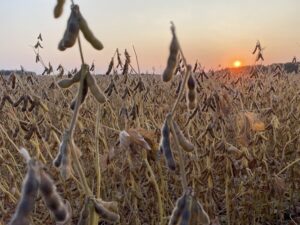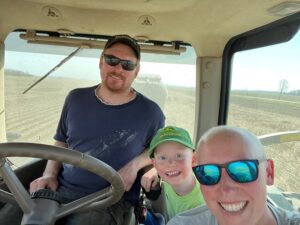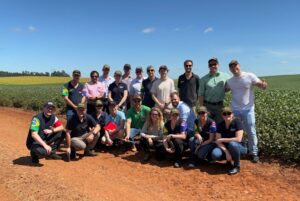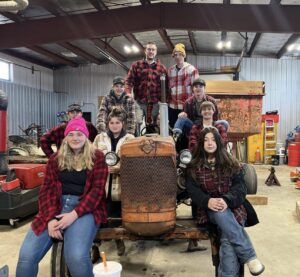The problem solvers: Riley McConachie
DISRUPTING FUSARIUM GENETIC ANALYSIS
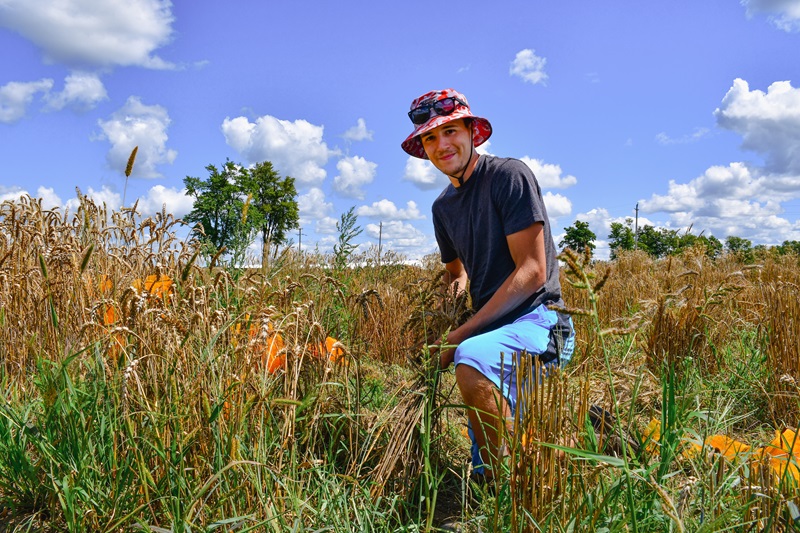
UP TO THIS POINT, PHENOTYPING (RATING DISEASE INFECTION SEVERITY) OF FUSARIUM HEAD BLIGHT (FHB) IN WHEAT HAS BEEN VERY INEFFECTIVE. There’s quite a bit of inaccuracy, making breeding efforts based on the ratings not as efficient as they could be. The existing rating systems are also time-consuming. Enter Riley McConachie, who is working to change this situation for good.
Under the supervision of Dr. Helen Booker at the University of Guelph, McConachie is pursuing a master’s degree, developing a new way to increase the accuracy of FHB disease ratings and slash the time needed to do so. “I’m combining deep machine learning with some fundamental remote sensing techniques,” he explains, “in order to rapidly produce accurate disease severity scores using simple cell phone images.” McConachie has already won numerous awards for his innovative approach.
It was during his bachelor’s degree in environmental science at the University of Guelph, specifically during his first co-op experience at the Indian Head Research Station in Saskatchewan, that McConachie was first introduced to agricultural science. “I really enjoyed my time there and ended up getting a position with the Wheat Breeding Lab at UofG for my third co-op position,” he says. “Afterwards, I completed an Independent Research Project with the lab and was invited to come back for my fourth co-op. I really enjoyed it, so I discussed a master’s with Dr. Booker. The rest is history!”
When asked to summarize why he’s drawn to agriculture science, McConachie points to its complexity. “There are so many approaches you can take,” he says, “and all the aspects interact with one another. It leaves such an open door for researching the aspect that holds the most interest.”
McConachie aims to wipe inaccurate FHB severity phenotyping off the map while automating the rating process. Time saved in the field means that researchers will have more time for other tasks and be able to help farmers sooner. Increased and faster rating accuracy will enable faster progress in breeding programs and faster release of improved cultivars.
“In the long term I hope to expand this workflow to create an app that allows producers to quickly and easily estimate the degree of infection within their fields,” says McConachie. “A better understanding of FHB infection within fields would allow producers to enact the optimal management strategy for harvesting their crop to help minimize the impact of FHB infection.”
To do all this, McConachie is harnessing the power of advanced deep learning algorithms, but ‘training’ these programs is quite time- consuming at times and requires a lot of computing power. The weather can also get in the way, but in a counterintuitive way. That is, to verify his work, McConachie needs that very particular weather conditions that FHB requires to grow — good for research but not for farming wheat.
McConachie is excited about his career and truly fascinated about using new technology in agriculture. “There are many ways it can be leveraged to improve the industry and help safeguard food supply chains,” he says, “and it’s powerful, but I think we also have to keep in mind that all technologies have limitations. Integrating some of the more fundamental techniques is very useful.”
Booker has been very impressed with McConachie’s progress so far. “Riley has been a tremendous asset to the Guelph Wheat Program as an undergraduate UESL/co-op student and now as a graduate student,” she says. “Riley has taken every opportunity to hone his communication skills by presenting his research to diverse audiences. Importantly, Riley is the first author of a peer-reviewed paper in the Plant Phenome Journal. Riley’s hard work and focus have really paid off.” •























